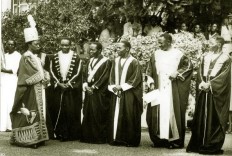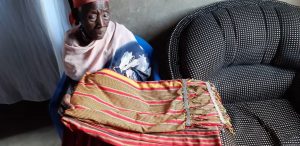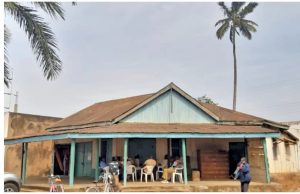KAMPALA-UGANDA/NEWSDAY: Mohamed Nasser Ammar al-sinawi al-harthi was raised in Uganda descending from his ancestors who arrived in in this East African Pearl of Africa, at the beginning of 1840s.
An adult now aged 68, but who has since relocated back to his roots in Oman, Mohamed Nasser holds fond memories of growing up and attaining early education in Uganda and bears its memories as though it just happened yesterday.
In the spirit to convey gratitude and share his Ugandan experience, Mohamed Nasser writes about his mutual historical interactions within Uganda and he hopes these can be picked by the UNESCO and taught in schools so that future generations know about this history.
“Uganda may be lesser known to have historical links with Oman by the new younger generation but it is still a safe haven for many Omanis. It is a country with a diversity of rich culture and is remarkably hospitable,” Mohamed says.
“During the reign of Seyyid Said bin Sultan in Zanzibar, Omanis travelled deep inside Africa from the East African Coast and Uganda was one of the major destinations.
Mohamed al-sinawi says his ancestors had travelled by Dhow from Oman to the East African Coast and then travelled a distance of over 1200km from Mombasa in Kenya by foot, crossing dangerous swampy landscapes and thickets (forests) ridden with wildlife and insects, seeking business opportunities and introducing of Islam deep in Uganda.
In 1844, Ahmed bin Ibrahim al Amri, who introduced Islam to the King of Buganda in Uganda, was the first Omani and foreigner to enter Uganda,” Mohamed said.
“Other Omanis and foreigners- the Europeans, Yemenis, Indians followed. Omanis in Uganda then received and supported the new comers in their travel to/from Uganda to the neighboring countries –providing all the necessary guidance. The Omani guests and other foreigners felt secured and encouraged because of our hospitality,” Mohamed says.
Mohamed says his forefathers also followed suit with some deciding to marry and live in Uganda and others brought their families with them.
“I was brought up in Uganda by my Omani family, and frankly, I enjoyed living and studying in Uganda. Ugandans have picked up some useful Omanis cultural traditions and maintained them, and vice versa. –sharing and speaking a number of languages,” Mohamed said.

With continuing integration of Omanis and Ugandans, a shared culture has been achieved with many intermarriages seen between the people of Uganda and Omanis.
The Kanzu and bikoyiz traditionally the official wear for cultural events is an introduction by the Omanis.
“The King of Buganda (Kabaka) who accepted Islam was the first to put on the Omani ‘dishdashas’-known in Buganda as Kanzu y’oMulera) and the ‘Bisht’ (Bisuti) followed by his senior officials in 1844. The Kanzu was then adopted as clothing for men in Buganda region and it slowly spread to other neighboring regions of Toro, Bunyoro and Busoga,” Mohamed disclosed.
“The pattern and design of the original Omani dishdasha, which our Omani Ancestral women used to knit by hand is still maintained in Uganda and tailored locally and sold in local shops and markets.”
Interestingly, in Uganda, the men do not use the ‘wizra’ (locally known as Bikoyi) as Omani men do. Instead, Ugandan women use the Bikoyi which are considered as a prestigious attire.
Both the wizra (locally known as Bikoyiz) and the Omani Dishdasha locally known as Kanzus were originally from Oman. The Kanzu was in white and cream color and the Bikoyiz were of different patterns and sizes.

Mohamed says that the Wizra locally known as Bikoyiz originated from Omani Villages.
In Uganda, the names given to these Bikoyiz were similar to the Villages.
“Until recent, the older women in Uganda maintained the names of the Bikoyiz from the Omani Villages that is, the Karyati was from Quriyat Village, Bula from Ibra Village and Sumaili from Sumayil Village in Oman
However, due to demand the Bikoyiz are now imported from other countries in beautiful designs and colors and sold in Shops and local markets in Uganda and Oman to the locals and foreigners as soverniers. These new Bikoyi Clothing and Kanzus are also now very common in Fashion Shows locally and internationally.
According to Mohamed al-sinawi, Omanis also took with them and introduced Omani medicines, like subar, khali, qarfa, filfil aswad, and the incense burning tradition with Luban. They also took up the teaching of the Qur’an.
The Omanis in Uganda became well known by the locals and other Foreigners. They made Uganda a focal point for foreigners travelling off the East African Coast.
Iconic house in Iganga
A Unique House, that strikes visitors in Uganda’s Eastern district of Iganga, “Beit al-Fouqi”, which the locals called “House of Arabs was built and owned by an Omani national, Mohamed bin Rshed bin Rshud al-sinawi al-harthi. It was built before 1900.
It is probably one of the oldest structures in Iganga, once a landmark and a focal for Omanis, Arabs and other Foreigners travelling to/from African Continent and East African Coast. It is Old Fashioned, yet still Intact and Eye Catching.

It was also a place for locals to meet and socialize with each other and the Arabs and other foreign visitors.
It is said in the old days, the house was surrounded by many fruit trees – coconut, pomegranate, jackfruit, zambarawo, sour soup (mustafelli), and mangoes and shrubs of different spices.
It is said that all the coconut and other fruit and other big natural trees at the front of the house were removed when the road from Jinja to Iganga was constructed in the late 1930s.
The Iron Old-fashioned construction, Beit al-Fouqi “House of Arabs”house is over 110 years and but still looks unique, probably the oldest house in that area. It is old fashioned, yet eye catching.
This house was renovated in 1918, replacing the one built before 1900. It was built with heavy, old fashioned, 24-gauge corrugated iron sheets, (26 inches width by 108 inches length) and fixed with cap nails. The timber used was extracted from the Milicia Axcelsa tree, locally known as Mvule.
The old fashioned structural techniques used makes this house unique and a landmark in the area.
“It bears the antique old fashioned items and structures inside and outside beit al-foqi (very Old Water Pots, old Doors and Windows, Shelves, Old Fashioned Wood and Steel Door and Window Locks and Roof Rain Water Collectors. In the house is some Old East African Coins in this Old Fashioned House, locally known in those days as Jegejege which was smallest denomination? Some coins had a hole in the centre,” Mohamed says.
And activities around this area are endless, with Omanis constantly socialising over Arabic coffee; a coconut tree in the courtyard is probably the tallest and oldest surviving tree in the area, grown before the 1950s.
The house has a verandah and two big guest bedrooms for visitors with Public toilets at the back of the courtyard. There are stories that some guests used to arrive after midnight and always find food and a place to sleep, and could stay for as long as they wished. While the verandah has multiple uses, including hosting meetings and celebrations, the guests could keep their belongings safely in the guest rooms.
Omanis in Uganda were well known for keeping up and maintaining their customs and culture by way of food, clothing, hospitality or cultural traditions.
Association
The Omanis in Uganda then also formed up the “ARAB OMANI ASSOCIATION COMMITTEE” with intentions to support Omanis living in Uganda. It was very useful and well recognized not only in Uganda but also in Oman and Zanzibar.
A story is told that Omanis got together and put up the first Masjid in Bugiri built from Iron Sheets in 1948.
They felt responsible for each other and for the up-bringing of their children with a collective spirit. The Omanis in Uganda became well known among the locals who picked up some useful traditions and maintained them, and vice versa.
During Eid celebrations, many Omanis and the locals used to come with their families and celebrate together with sweet mashed rice and meat, locally known as ‘bokoboko’. This trend is still maintained” al-sinawi said.
The Omanis overseas also kept touch with their villages and people in Oman.
Mohamed further said that his elders made it a habit to listen to BBC Arabic radio and would then discuss it when they got together for Qahwa (Omani coffee). “We always stood around to serve them and listen to their discussion. However, when the Late His Majesty Sultan Qaboos came to power in 1970, many got thrilled and decided to come back to Oman,” al-harthi said


